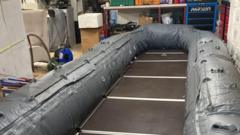
Rethinking transportation safety and wildlife preservation, the U.S. Department of Transportation is offering $145 million to states with winning ways to help animals better get around roads.
The U.S. government is in the midst of an experiment called the Wildlife Crossings Pilot Program that is receiving the first such dedicated federal funding stream.
A total of $350 million has been earmarked to be spent on U.S. wildlife crossing projects from Fiscal Years 2022 through 2026.
The current $145 million figure will go towards FY 2024 and FY 2025 projects, while $80 million has been designated for FY 2026 grant applications that will be accepted starting May 1. Last year’s call for projects met with great demand from 34 states wanting $549 million—though the allocation topped $110 million to pay for 19 projects in 17 states, including those submitted by four Native American tribes. For any project to succeed, wildlife must want to use the man-made byways as they travel for migration and other purposes.
The motivation behind this landmark wildlife crossing experiment is to seek technical innovations that work both for states and wild creatures to make life safer for everyone moving about in their daily activities. The Federal Highway Administration estimates animal collisions with vehicles cause thousands of serious injuries to people, kill 200 Americans yearly and result in $10 billion in economic damages based on reported cases. Unreported animal crashes if combined would push these numbers even higher.
The top 10 states with the most drivers colliding with animals annually (based on yearly averages and factored in state and FHWA societal cost calculations) are: · Michigan—54,328 crashes between vehicles and animals yearly, · New York—40,465 crashes, · North Carolina—21,658 crashes, · Ohio—20,990 crashes, · Wisconsin—20,710 crashes, · Indiana—16,362 crashes, · Illinois—16,245 crashes, · Georgia—14,489 crashes, · Texas—11,614 crashes, and · New Jersey—10,015 crashes. The three states with the highest rates of known fatal human-animal vehicle accidents each year are Texas, Michigan and Pennsylvania. These overall statistics revealing wildlife collision implications for people that are easier to tabulate and grasp.
But it is harder to place a damage value on and determine the ecological significance of these accidents for the non-human victims. Birds, for instance, generally aren’t a large component of wildlife crossing mitigation strategies in government transportation departments. Yet, vehicle strikes are thought to be among the leading causes of bird deaths.
The U.S. Fish and Wildlife Service suggests from 89 million to 340 million birds die annually from fatal roadway encounters with vehicles, which take place in a multitude of scenarios.
Birds living or nesting on the ground are run over. Winds near bridges sweep waterfowl into the path of oncoming cars. Owls smash into vehicles because they fly at the height of cars while searching for food.
Other birds seeking to eat fruit along roads are poisoned by toxic materials thrown on icy roads in winter. A study provided to Congress in 2008 identified 21 species (amphibians, birds, reptiles and mammals) whose survival is greatly tied directly to being killed by vehicles on roads. Transportation planners can improve roadway safety and increase habitat connectivity for wildlife by creating special critter byways—for mammals, birds, insects and other creatures—to pass over, under and across roads away from vehicles.
Possibilities include building new structures, refashioning existing ones, creating passageway diversions or installing animal warning systems to alert drivers. A key byproduct of the U.S.
government’s ongoing wildlife crossing experiment is to better connect habitats for creatures that live on land and in water. In some cases, interstates have kept mammal populations (like antelope, deer and elk) divided since the 1950s or 1960s when many national highways were first built. Keeping the animals apart can cause genetic problems due to inbreeding and create other health issues leading to higher mortality rates.
A look at some of last year’s winning wildlife crossing grant awards shows how state departments of transportation are coming up with creative solutions to improve safety for drivers and wildlife. For instance, Arizona was awarded $24 million for the Interstate-17 Munds Park to Kelly Canyon Wildlife Overpass Project. The plan is to install some 17 miles of wildlife fencing to connect habitats and lower vehicle crashes, especial with deer and elk (which can weigh over 1,000 pounds and cause a lot of damage to passenger vehicles).
Other creatures that will benefit from creating a 100-foot-wide overpass in Arizona are black bears, bobcats, coyotes, foxes, mountain lions and smaller animals. Another large grant went to Wyoming’s transportation department. It will spend its $24.
4 million federal grant to build an overpass, several underpasses and high-barrier wildlife fencing along a 30-mile stretch of rural U.S. Route 189 to deter the high rate of vehicle accidents from wildlife.
Each year 80 reported vehicle collisions happen there linked to seasonal deer movements. Many transportation planners and wildlife enthusiasts have applauded the federal government’s financial commitment to create more wildlife crossings in the United States. These innovative transportation construction projects made possible by positive and proactive government actions are likely to reap untold benefits and improve safe travels for everyone.
.













